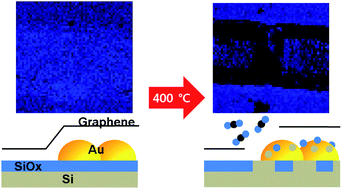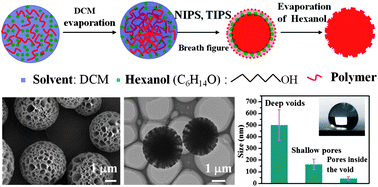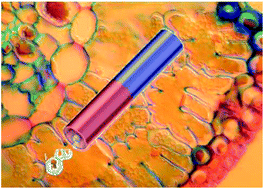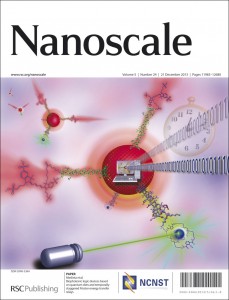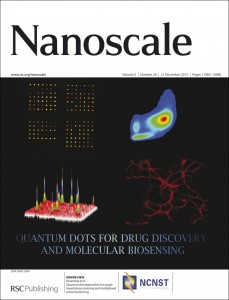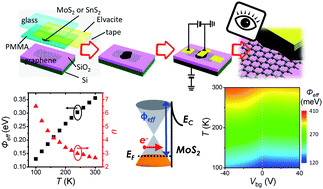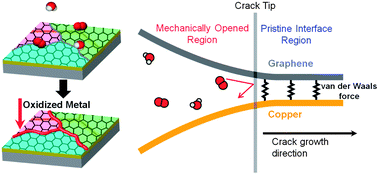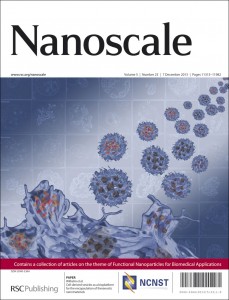 Nanoscale is delighted to present its current issue which includes an excellent collection of articles on Functional Nanoparticles for Biomedical Applications, Guest Edited by Nguyen TK Thanh. Read her Editorial to find out more.
Nanoscale is delighted to present its current issue which includes an excellent collection of articles on Functional Nanoparticles for Biomedical Applications, Guest Edited by Nguyen TK Thanh. Read her Editorial to find out more.
The outside front cover features an article on Cell-derived vesicles as a bioplatform for the encapsulation of theranostic nanomaterials by Amanda K. Andriola Silva, Riccardo Di Corato, Teresa Pellegrino, Sophie Chat, Giammarino Pugliese, Nathalie Luciani, Florence Gazeau and Claire Wilhelm.
Silver nanoparticles induce developmental stage-specific embryonic phenotypes in zebrafish is the article highlighted on the inside front cover by Maksym Yarema, Riccarda Caputo and Maksym V. Kovalenko.
Issue 23 contains the following Review and Feature articles:
Functional nanoparticles for biomedical applications
Nguyen Thi Kim Thanh
Upconverting and NIR emitting rare earth based nanostructures for NIR-bioimaging
Eva Hemmer, Nallusamy Venkatachalam, Hiroshi Hyodo, Akito Hattori, Yoshie Ebina, Hidehiro Kishimoto and Kohei Soga
Tracking stem cells in tissue-engineered organs using magnetic nanoparticles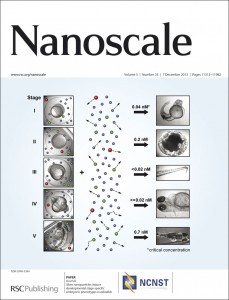
Roxanne Hachani, Mark Lowdell, Martin Birchall and Nguyen Thi Kim Thanh
Recent advances in lanthanide-doped upconversion nanomaterials: synthesis, nanostructures and surface modification
Peiyu Qiu, Na Zhou, Hengyu Chen, Chunlei Zhang, Guo Gao and Daxiang Cui
Review on measurement techniques of transport properties of nanowires
Miguel Muñoz Rojo, Olga Caballero Calero, A. F. Lopeandia, J. Rodriguez-Viejo and Marisol Martín-Gonzalez
Growing metal nanoparticles in superfluid helium
Shengfu Yang, Andrew M. Ellis, Daniel Spence, Cheng Feng, Adrian Boatwright, Elspeth Latimer and Chris Binns
Fancy submitting an article to Nanoscale? Then why not submit to us today!
Comments Off on Nanoscale Issue 23 of 2013 out now!


